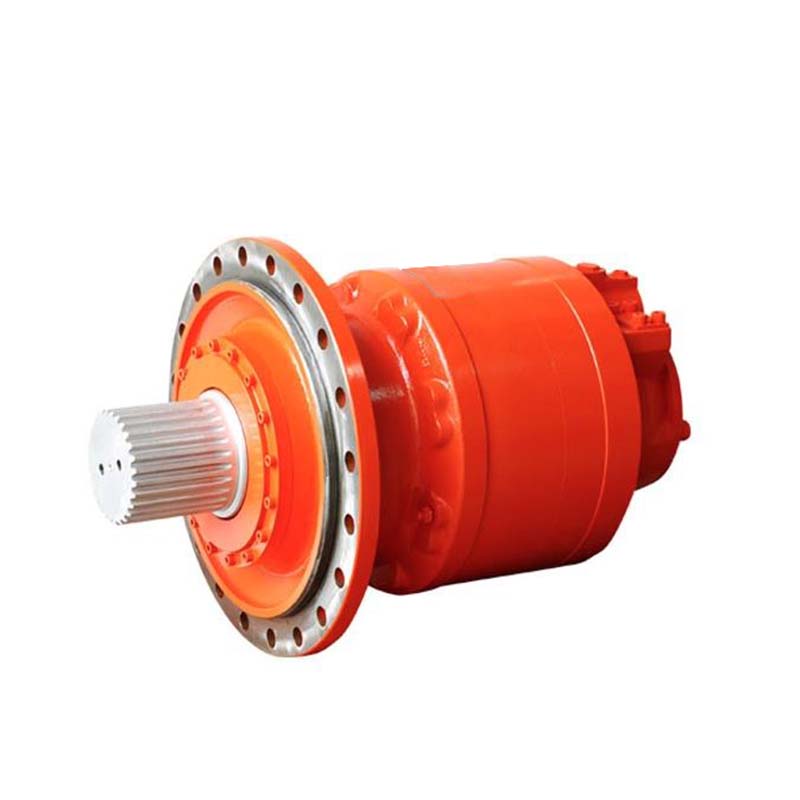Basic Structure Of A Hydraulic Motor
hydraulic motors differ significantly from hydraulic pumps in their operating principles and performance requirements, which leads to some key differences in their design and construction. Firstly, the primary function of a hydraulic motor is to convert hydraulic energy into mechanical energy, so it needs to be designed to meet the need for forward and reverse rotation capability. For this reason, the internal structure of a hydraulic motor is usually symmetrical to ensure that it can work effectively in both directions. In addition, hydraulic motors need to have a wide enough speed range, especially a minimum steady speed, which is important for their application scenarios. For this reason, hydraulic motors are often fitted with rolling bearings or hydrostatic plain bearings to reduce friction and increase efficiency.
Secondly, hydraulic motors depend on the input of pressurized oil for their operation, so they do not have to be designed to be self-priming. However, some initial sealing is still needed to ensure that it provides the necessary starting torque at start-up. This requirement makes the sealing structure of the hydraulic motor particularly important. Good sealing reduces leakage and energy loss and increases efficiency.
Hydraulic motors are constructed with the following features:
Discharge port pressure design: The discharge port pressure of hydraulic motors is generally slightly higher than atmospheric pressure, which is different from that of Hydraulic Pumps. The diameter of its inlet and outlet ports are usually kept the same, to facilitate the smooth flow of liquid.
Symmetry requirements: because the hydraulic motor needs to be forward and reverse rotation, the internal structure should have symmetry. Unlike hydraulic pumps, hydraulic motors cannot function by leaking oil internally, so to protect their shaft seals, bi-directional hydraulic motors are usually designed to leak externally. For this reason, hydraulic motors must be fitted with a special external oil drain to ensure that they can effectively drain excess fluid when working in reverse.
Choice of bearing: When designing a hydraulic motor, the choice of bearings is critical to ensure that it will operate over a wide range of speeds. This will avoid excessive wear or failure at high or low speeds.
Self-priming capability and sealing: Hydraulic pumps need to be constructed to be self-priming, a characteristic that is critical to their performance. Hydraulic motors, on the other hand, must be well sealed at start-up to start smoothly and maintain operation when a load is applied.
Torque pulsation and internal friction: To improve the starting and operating performance of a hydraulic motor, the design requires low torque pulsation and low internal friction. This not only improves the responsiveness of the hydraulic motor but also reduces energy losses and improves overall efficiency.
Conclusion
Although there are many similarities between hydraulic motors and hydraulic pumps in the structure, because of their different job functions and performance requirements, the two in the design and functional implementation the obvious differences. These design details are critical to improving the reliability and efficiency of the hydraulic system.
Saivs brand
- Mobile Mast Aerial Work Platform
- SL6 SL10 Rexroth Check valves pilot operated
- Small Hydraulic Winch 10 Ton Ship and Deck Machinery Used
- A6ve rexroth bent axis hydraulic motor
- Counterbalance Valves CBCA
- Gear pumps series NSH32M
- Hydraulic control check valve rexroth Z2S6 Z2S10 Z2S16 Z2S22 Z2S22-1-52/V
- A10VSF28 Rexroth Hydraulic Pump Parts
- Low Noise Denison T6 Series Vane Pump Hydraulic Pump
- DBET/DBETE6 Series Rexroth proportional relief valve
